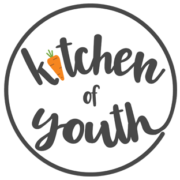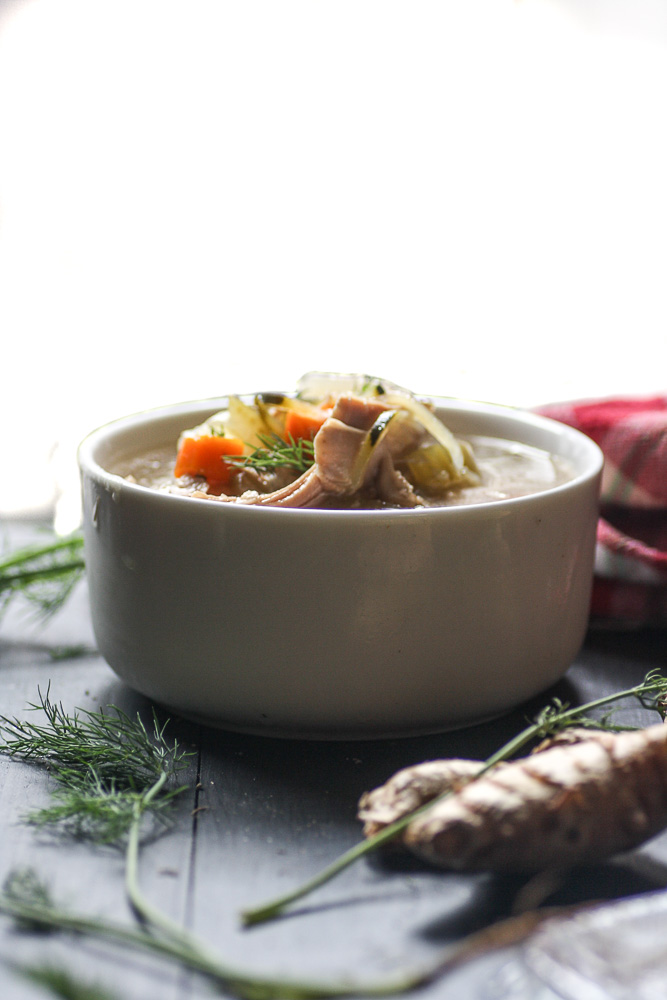Buckwheat Ramen Soup

What is it about ramen that makes it so good that I will eat it even on a hot summer day? I mean, usually, if you told me I was going to have hot soup for dinner in August, I’d run the other way. But not with ramen. It’s just so good! And this buckwheat ramen soup is one of my all-time favorite recipes.
I like to eat grain-free whenever possible. I also love pasta and noodles of all kinds. Now, I could make this soup using all different types of vegetable noodles, like zucchini, carrot, parsnip, etc. This recipe from feedfeed is awesome if you want to give the veggie noodle ramen a try. The buckwheat ramen noodles that are available in stores now are amazing, so I say give this a try! It’s close to real, authentic ramen noodles.
Oh, and in case you’re wondering, buckwheat (despite its name) is not a grain, it’s a seed. So, it’s like hitting the jackpot with these packaged noodles.
The other day, my niece was coming over for dinner. I didn’t give this dinner any thought at all during the day. Then, all of a sudden, at about 4pm, I realized I better make sure I have the ingredients to make something. Anything edible would do. I looked in my pantry, and saw a package of buckwheat ramen noodles. And, I have to tell you that even though it’s hot here in New York in August, nobody complained — it was the perfect dinner.
I served the hot bowls of ramen with cold old-fashioned tomato sandwiches. Can I just say, this was an amazing dinner. So, I’m telling you that you have to make this buckwheat ramen soup. And soon. Don’t wait til winter.
And, if you want another great summer noodle dish, try my recipe for Szechuan Zoodles.

There are a bunch of great healing ingredients in this buckwheat ramen soup:
Buckwheat is great to eat if you have diarrhea. It also helps lower blood pressure, stops some types of sweating, and has a good amount of vitamin E. It also contains antioxidants that can help fight cancer and heart disease. Buckwheat is a seed, not a grain, so no inflammation here!
Ginger is a Chinese herb (Sheng Jiang). It’s especially good during cold weather and also during seasonal changes. So, when winter is trying to turn into spring, and we (those of us on the east coast) get some of those cold, raw, damp days, ginger will make you feel better and will help boost your immune system. Ginger is also great for some digestive issues. Old folklore shows that ginger was rubbed on scalps to stop baldness. And, in some circles, a ginger paste is still rubbed on arthritic joints to stop pain (don’t try this at home unless you are diagnosed with a cold-condition by an acupuncturist).
In Eastern medicine, bok choy is used to quench thirst, aid digestion, prevent constipation and treat diabetes. It is rich in vitamin C, beta-carotene, folate and fiber. And there are only 20 calories in one cup of Bok Choy. So, it’s good for you, it’s easy to prepare, and it tastes good.
Hot peppers contain more vitamin C than any other vegetable and they are good at fighting off the common cold. So, if you like spice, as I do, use a generous amount of whatever hot peppers you like. The main component of hot peppers is capsaicin. Capsaicin actually works with your body and mind to make you feel happy. It’s also good for reducing swelling and can relieve arthritic joint pain. If you have high blood pressure, check with your doctor before eating too many hot peppers because they can actually raise the blood pressure in some people. I used a hot pepper sauce in this recipe (Sriracha) and I added some sliced jalapeños at the end — do whatever makes you happy!
Garlic is amazing in its antiviral and antibacterial capabilities. Garlic is actually a Chinese herb (Da Suan). It’s used to kill toxins and parasites and also to reduce swelling in the body. It’s what I call a great “A” herb: anesthetic, antibacterial, anti fungal, antioxidant, antiviral, etc….
Carrots help strengthen the organs in your body. They also are good for the eyes (this is their claim to fame) and they promote healthy digestion. Many moons ago, people used to make carrot tea to ward off measles and to prevent cancer. Carrots help detoxify the body and in today’s world of Chinese medicine, they are prescribed to ease constipation and tonsillitis.
Onions are great for your immune system; they are a natural antihistamine. In the winter, I eat lots and lots of onions… I guess I should feel sorry for the people close to me! Recently, I recommended that a patient with bronchitis put sliced raw onions in her socks when she went to sleep… she woke up so much better; they actually can rid the body of bacteria. (I know I’ve told you this before, but it really is awesome!) Onion is a superhero in the food world!

| Buckwheat Ramen Soup | Print |
- 4 eggs, boiled for 5 minutes, then cooled in ice water for awhile, then peeled and cut in half
- 1 Tbs extra-virgin olive oil
- 1 medium onion, chopped
- sea salt
- 3 garlic cloves, sliced
- 1 Tbs yellow miso
- 1 tsp grated ginger
- ½ tsp sriracha sauce
- 7 cups vegetable broth
- 1 Tbs white vinegar
- 1 large head of bok choy, cut into ½-inch wide strips
- 3 Tbs liquid aminos
- 1 cup shredded or spiralized carrots
- 3 buckwheat ramen noodle cakes
- 1 jalapeno pepper, sliced (optional garnish)
- In a large soup pot, heat the oil over medium heat and add the onions. Sprinkle with a little sea salt.
- Saute about 5 minutes, or until the onions start to brown.
- Add the garlic, miso, and ginger. Cook, stirring about 1 minute.
- Stir in the sriracha and cook for about 30 seconds.
- Add the vinegar, and use it to deglaze the pan, scraping up any bits from the bottom of the pan.
- Add the broth, bok choy, carrots, and aminos.
- Bring to a boil, then reduce the heat to low and simmer, uncovered, until the bok choy is slightly tender, about 15 minutes.
- Turn the heat back up to medium-high and add the buckwheat ramen noodles, poking them with a fork or tongs to break them up. Cook, stirring occasionally, just until the noodles are al dente (about 4 minutes). NOTE: Do not overcook these noodles, or they may become gummy!
- Ladle the soup into bowls, and top each bowl with 2 egg halves and a few slices of jalapeños.
- Enjoy!






